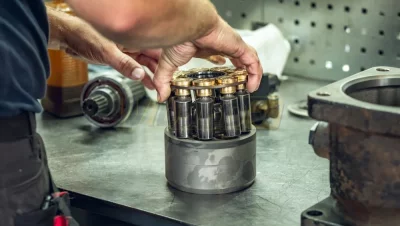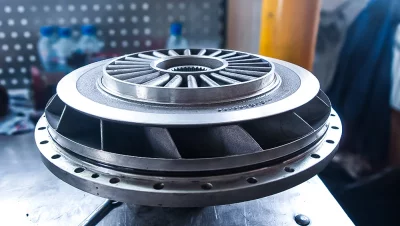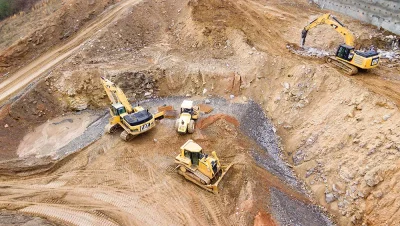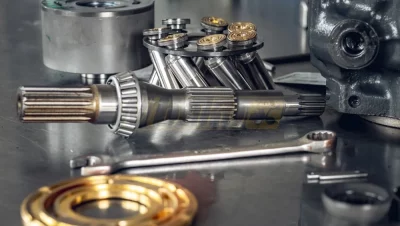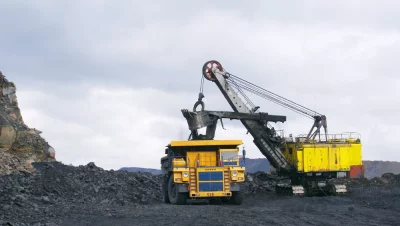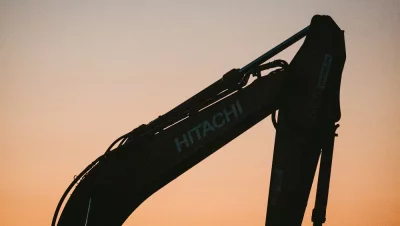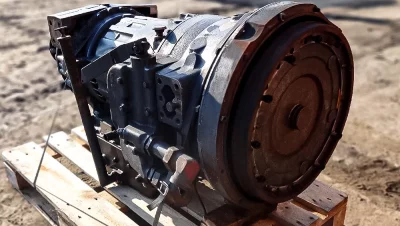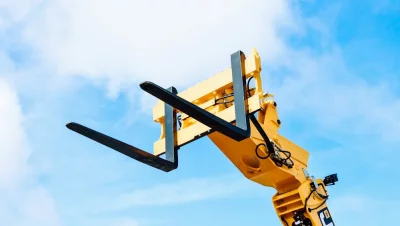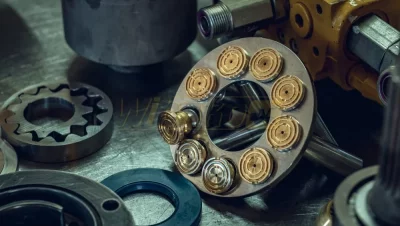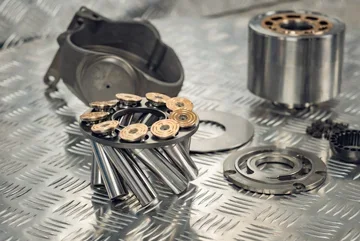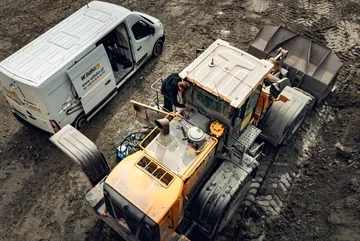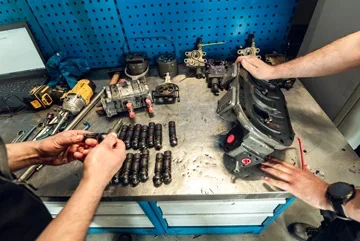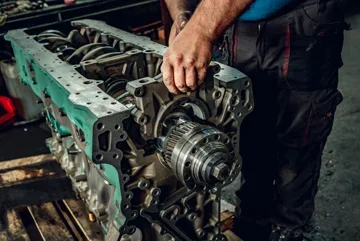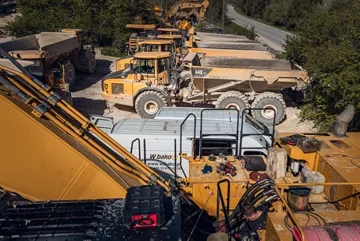There is nothing more frustrating on a construction site than a machine that suddenly refuses to work.
The Liebherr R924 excavator started losing power, and there were alarming sounds coming from the hydraulic system. Were we able to quickly identify the problem and effectively solve it? We invite you to read our blog and watch the video on our YouTube channel!
Symptoms of failure – harbingers of a serious problem
“The machine is weak and its movements are slow” we heard from a client who commissioned us to diagnose his excavator. It was good that he called, as it turned out later that further operation of heavy equipment in such a condition could lead to disaster.
Sounds serious? Stay with us to find out what happened to the LIEBHERR R924 excavator.
Detectives in action – how do we diagnose failures?
Our service team sprang into action. They already had some suspicions about what might be causing the excavator's malfunction. In such situations, it is crucial to quickly and accurately determine the cause of the problem to prevent its escalation.
We started the excavator and waited a moment for it to warm up, then we connected measuring devices and checked the hydraulic pump pressure. We always test the pressure at maximum cylinder extension, holding the joystick in the neutral position.
Results? Definitely below standard – instead of the expected 350-360 bar, the values dropped to 210 and 160 bar. Additionally, during the tests, alarming sounds could be heard from the hydraulic pump. This meant one thing – we have a serious problem with the pump.
Time for disassembly – it's not always easy!
Diagnosis is one thing, but the real challenge is just beginning. Disassembling the hydraulic pump is a process that requires precision and strength.
Preparation Stage:
- We prepared a barrel for the old hydraulic oil (believe us, its condition was terrible – black as tar!).
- We inspected the oil filter – it was not in the best condition, and its crossbars were bent.
- We checked the magnet insert in the oil filter housing, which fortunately did not have significant contamination (the magnet is designed to attract all kinds of metal shavings present in the oil).
- We marked the hoses with zip ties in different colors to avoid later chaos during reassembly. (better not to mix up the hoses when reassembling the pump, as “various strange things” can happen).
Disassembly Stage:
- We unscrewed the suction and supply hoses. (it is important to protect them from water and contaminants).
- We removed the air filter to have easier access to the screws.
- We unscrewed the pump screws so that it was not attached to the flywheel.
- We attached hooks to the pump, to which we secured a special strap.
- Finally, we pulled out our ace in the hole — a specialized hoist, mounted on our service Master. (it can lift a weight of 240 kg at full extension).
However, during disassembly, we encountered a problem – the pump was so tightly seated in the flange that we had to really stretch to pull it out. But in the end, we succeeded! The pump made its way onto our service vehicle, and we transported it to the workshop.
What next? Don’t miss the next episode!
This is only half of the story! In the next post (and episode on YouTube!), we will show you the process of regenerating the DPVP 108 pump and reveal whether we can bring the Liebherr R924 back to life. If you are interested in topics related to the repair and servicing of construction machines, be sure to subscribe to our YouTube channel and follow our blog!
The full video can be seen here.



